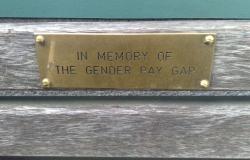Odds Still Stacked against Working Women in Europe

International Women’s Day on March 8 is around the corner again, offering Europe’s decision makers a fresh chance for Europe to admit that women still lag men in the workplace. Childcare provision is often in short supply and women are still much less likely than men to sit in the boss’ chair - but is Europe moving in the right direction?
It was in 1909 when the Socialist Party of America celebrated the first International Women’s Day, supporting a garment workers' strike in New York where women protested against dire working conditions. Over the years more and more nations, starting with socialist and communist ones, began to mark the date. It was adopted by the feminist movement in the 1960s and, in 1975, it became a firm fixture worldwide when the United Nations decided to include it in its calendar.
These days countries vary widely in how they mark the date - some celebrate it as a national holiday, some present small gifts to the women in their lives. Others ignore it completely. But worldwide, it offers a good vantage point to survey the successes and failures of women’s role in the workplace. After all, while women’s tough workload in New York’s factories first sparked the international holiday, fast forward more than a century and workplace equality remains elusive.
In Europe, women are generally underpaid and underrepresented in the workforce, prompting President of the European Commission Ursula von der Leyen to announce plans to create a new European gender strategy when she took the top job last year. A glance at the statistics shows how much needs to change in many parts of the European bloc. To start with, overall fewer women work than men, as shown by the Bertelsmann Stiftung’s Sustainable Governance Indicators (SGI) survey into how social policies affect families. Probing the questions “Do family policies maximize opportunities for both parents? Is there a robust system of family support and child care services in place?” the results laid bare Europe’s mixed track record for equality: Front runner nations, Finland, Lithuania and Sweden have almost as many women working as men (with a ratio of 0.96 women employed compared to men). However, 17 of the 21 European nations had a ratio of below 0.9, meaning ten percent more men than women form their national workforce.
Daycare dilemmas
As well as spending fewer hours working than men, European women still face a pay gap, which has proven hard to shrink. Official statistics show that working women in the EU earn an average of 16 percent less per hour than men, even though the equal pay for equal work principle was introduced with the Treaty of Rome back in 1957.
This 16 percent pay disparity means that from November 4 until the end of the year, European women effectively work for free. This blatant inequality was addressed head on by von der Leyen, who last year spoke out against the fact that “equal pay for equal work is still not a reality.” She added: “That's why I will table measures to introduce binding pay transparency measures. We must give women and men equal rights.”
Her comments chime with sentiments often aired within the European Parliament, including recurrent debates on the subject, most recently in mid-January. However, high-level debate has not sparked action, and the economic reality of European women has barely shifted over the past decade, with the pay gap only marginally changing within the bloc.
Lower earnings, in part, reflect how women often prioritize caring for families, taking career breaks or part-time work when state support lacks. Childcare is key in helping women secure a more equal footing in the workplace, and the region’s patchy provision of nursery spaces frequently keeps women away from their former employment. SGI also ranks countries according to how much their policies enable women to work. Interestingly Europe encompasses both best- and worst-case scenarios, ranging from Denmark, where more than 70 percent of under two year olds attend child care, to the Czech Republic, where the figure stands at just 6.5 percent.
Positions of power
As well as highlighting women’s bad deal when it comes to pay and working hours, International Women’s Day also reveals how a glass ceiling continues to beset women. The International Women’s Day website proffers motivational slogans to urge companies to level the playing field: “Equality is not a women's issue, it's a business issue,” or “Gender equality is essential for economies and communities to thrive”, but the reality is that few women in Europe have executive jobs. Less than 6.9 percent of the region’s top companies have female CEOs. Meanwhile, Eurostat data show that if we look at the gap in different occupations, female managers are at the greatest disadvantage: they earn 23 percent less per hour than male managers.
This gap comes at a high price tag to the world's economy: A McKinsey Global Institute report finds that $12 trillion could be added to global GDP by 2025 by advancing women’s equality.
And women are in a clear minority at the upper echelons of European politics. Ursula von der Leyen’s election to the post of president was welcomed by many commentators as a belated step towards redressing the gender balance of what has been dubbed a European boy’s club. But, despite her repeated promises to boost equality, her early pledge to strike gender balance within her new Commission, has already fallen short of the mark. Among the 26 new commissioners selected, only 11 are women. Hampered by national governments who ignored her call for two candidates, one male and one female, von der Leyen has now had first-hand experience of the difficulty of putting pledges into practice.
Meanwhile, internationally, it is clear that politicians need to up their game to improve the position of women: A damning new report from the World Economic Forum has warned that, at the current rate of improvement, the gender pay gap will not be closed for more than two centuries. It showed that the earnings disparity is even growing worldwide, sparking their predication that women born in 2225 will finally get equal pay.
Jess Smee is a Berlin-based journalist who writes for The Guardian newspaper among others. She is an editor for SGI News and the Bertelsmann Stiftung's BTI Blog.
Image: Neela, Ste & children Lamb via Flickr (CC BY 2.0)


